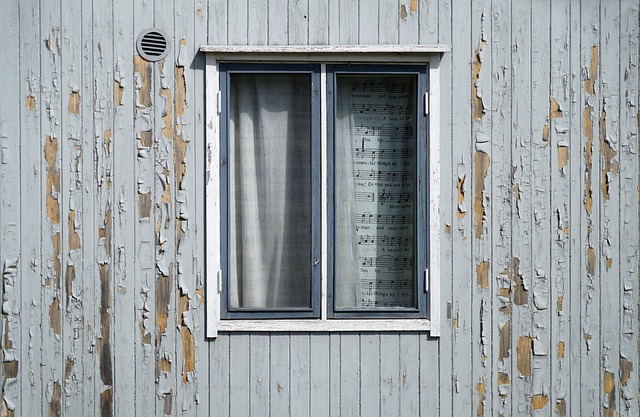Window replacement is a cost-effective and aesthetically pleasing aspect of home repair and maintenance. Old windows can drive up energy bills, so replacing them with energy-efficient models saves money and boosts comfort. New windows also increase property value and offer various styles for every taste and budget. This guide covers window installation steps, from measuring to final fitting, targeting both DIYers and professionals. Regular maintenance, including cleaning, checking seals, and lubricating mechanisms, ensures long-lasting functionality. Proactive care contributes to efficient home repair and maintenance, ultimately saving money.
- Understanding Window Replacement and Its Benefits
- The Process of Window Installation: A Step-by-Step Guide
- Tips for Maintaining Your New Windows and Ensuring Longevity
Understanding Window Replacement and Its Benefits

Window replacement is a significant aspect of home repair and maintenance, offering numerous benefits for both aesthetics and functionality. Old or damaged windows can compromise the energy efficiency of a home, leading to increased heating and cooling costs. By replacing them with modern, energy-efficient models, homeowners can enjoy reduced utility bills and improved comfort levels throughout the year.
Moreover, new windows enhance the overall look and value of a property. They come in various styles, materials, and designs, allowing homeowners to choose options that align with their aesthetic preferences and budget. From double-glazed windows for soundproofing to energy-saving models with advanced coatings, the possibilities are vast. Window replacement is an investment that pays off in both visual appeal and long-term savings.
The Process of Window Installation: A Step-by-Step Guide

Window installation is a process that requires careful planning and execution, but with the right preparation, it can be a manageable DIY project or a straightforward task for professional installers. Here’s a step-by-step guide to help you navigate through the process:
1. Measure and Prepare: Start by accurately measuring the existing window opening. Ensure you have the correct size and style of replacement window in hand. Prepare the opening by removing any old windows, insulation, or framing that needs to be replaced. This step is crucial for a proper fit and efficient installation.
2. Install the Window Frame: Position the new window frame into place, ensuring it aligns with the opening. Secure it temporarily with brackets or clamps. Fill any gaps around the frame with appropriate sealing material to ensure energy efficiency. Once sealed, permanently install the frame using nails, screws, or the recommended fasteners for the specific window type.
3. Fit and Adjust: Carefully fit the window pane into the opening, ensuring it sits level and flush. Adjust as needed to account for any gaps, then secure the window in place with appropriate hardware. This step may vary depending on the window type, so follow manufacturer instructions carefully.
4. Seal and Insulate: Apply a high-quality sealant around the window’s perimeter to create an airtight seal. Ensure it is compatible with your climate to optimize energy efficiency. Install any additional insulation or weatherstripping recommended for your region, further enhancing the window’s performance in home repair and maintenance.
Tips for Maintaining Your New Windows and Ensuring Longevity

To ensure your new windows provide years of beautiful functionality, regular maintenance is key. A simple yet effective routine includes cleaning the window frames and sills regularly to prevent buildup of dirt or debris. Use a soft cloth and mild detergent, avoiding harsh chemicals that could damage the finish. Keep an eye out for any signs of water intrusion or leaks and promptly address them, as even small issues can lead to bigger problems over time.
Additionally, check the window seals and weatherstripping periodically to ensure they remain secure and sealed. This simple step prevents drafts and reduces energy loss. Consider using a silicone-based lubricant on the operating mechanisms to keep the windows sliding smoothly and effortlessly. Regular care will not only prolong the life of your new windows but also contribute to efficient home repair and maintenance, saving you money in the long run.
Replacing and installing windows is a significant aspect of home repair and maintenance, offering numerous benefits, from enhanced energy efficiency to improved curb appeal. By understanding the process and implementing proper care, homeowners can ensure their new windows stand the test of time. This comprehensive guide provides the knowledge needed to navigate window replacement with confidence, allowing you to make informed decisions and enjoy the transformative effects on your living space for years to come.
